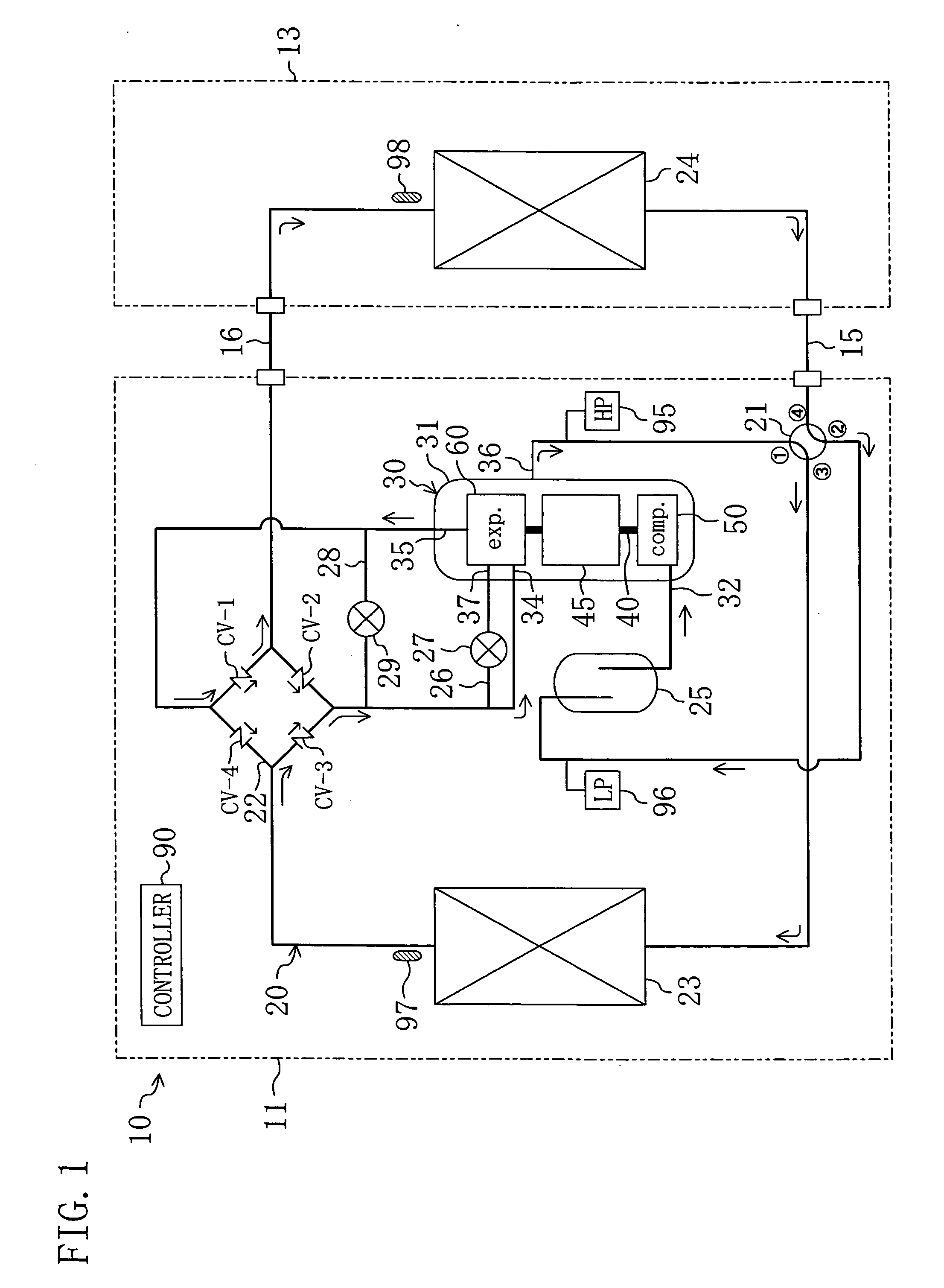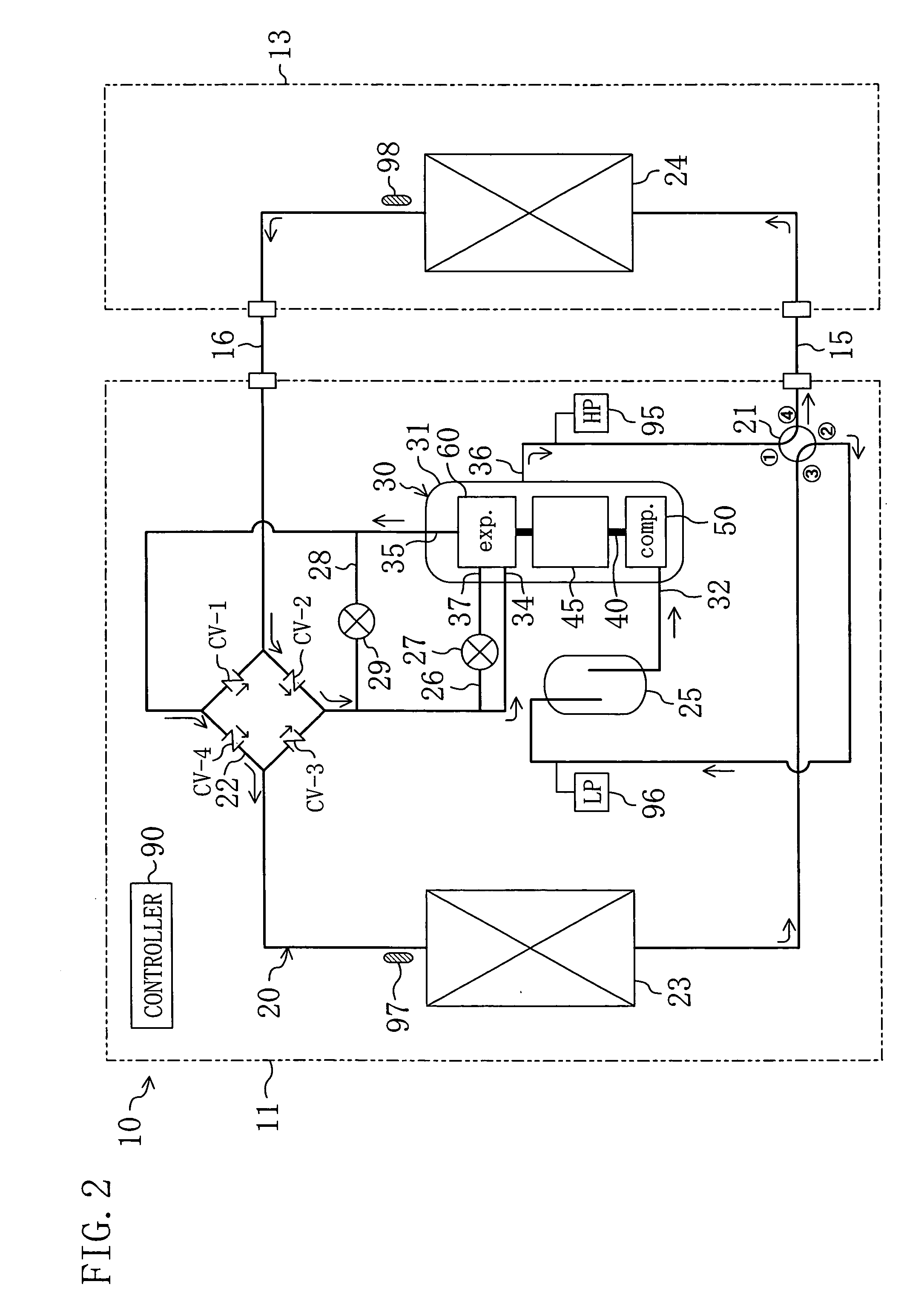Refrigeration Apparatus
a refrigerant and expander technology, applied in the direction of lighting and heating apparatus, liquid fuel engines, machines/engines, etc., can solve the problems of increasing the amount of electric power supplied from the outside, reducing the amount of refrigerant that flows through the expander, etc., to achieve maximum coefficient of performance, reduce the amount of power recoverable, and stable operation
- Summary
- Abstract
- Description
- Claims
- Application Information
AI Technical Summary
Benefits of technology
Problems solved by technology
Method used
Image
Examples
Embodiment Construction
[0048] Hereinafter, an embodiment of the present invention is described in detail with reference to the drawings. An air conditioner (10) of the present embodiment is formed by a refrigeration apparatus of the present invention.
Overall Configuration of the Air Conditioner
[0049] As shown in FIG. 1, the air conditioner (10) is a so-called “separate type” air conditioner, and includes an outdoor unit (11) and an indoor unit (13). The outdoor unit (11) houses therein an outdoor heat exchanger (23), a four way switch valve (21), a bridge circuit (22), an accumulator (25), and a compression / expansion unit (30). The indoor unit (13) houses therein an indoor heat exchanger (24). The outdoor unit (11) is installed outside a building. The indoor unit (13) is installed inside the building. In addition, the outdoor unit (11) and the indoor unit (13) are connected together by a pair of interconnecting pipelines (15, 16). Details about the compression / expansion unit (30) will be described late...
PUM
 Login to View More
Login to View More Abstract
Description
Claims
Application Information
 Login to View More
Login to View More - R&D
- Intellectual Property
- Life Sciences
- Materials
- Tech Scout
- Unparalleled Data Quality
- Higher Quality Content
- 60% Fewer Hallucinations
Browse by: Latest US Patents, China's latest patents, Technical Efficacy Thesaurus, Application Domain, Technology Topic, Popular Technical Reports.
© 2025 PatSnap. All rights reserved.Legal|Privacy policy|Modern Slavery Act Transparency Statement|Sitemap|About US| Contact US: help@patsnap.com



